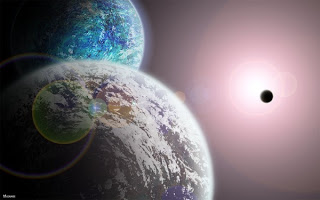 |
| Over 60 billion habitable planets probably present in our Milky Way (Credit: mickare/deviantart) |
Main Points:
Scientists have estimated that there
could be over 60 billion habitable planets in our Milky Way alone. This
estimate is about twice the previous estimates of at least one Earth-sized
planet in the habitable zone of each red dwarf star.
Publishing in:
Astrophysical Journal Letters
Study Further:
Previous estimate was made by the
researchers from Harvard University and this new thinking has been reported by
the researchers from the University of Chicago and Northwestern University.
This new estimate has been made by
considering “cloud cover”. Cloud cover is the concept given to the dayside of
the exoplanets that are tidally locked i.e. one hemisphere of the planet
continually faces the star (dayside), while the other faces away (darkside). It
was thought that dayside would have high level of stellar flux but recent
computer simulations showed otherwise due to the presence of clouds.
Cloud cover could be the reason that
“tidally locked planets have low enough surface temperatures to be habitable,”
explained Jang in his recently published paper.
Red dwarfs “represent about ¾ of the
stars in the galaxy, so it applies to a huge number of planets,” Dr. Abbot,
co-author on the paper, told Universe Today.
Future observations will approve or
disprove this finding by measuring the cloud temperatures and James Webb Space
Telescope would be one of the better options to study.
Source:
Reference:
Jun Yang, Nicolas B. Cowan, & Dorian
S. Abbot (2013). Stabilizing Cloud Feedback Dramatically Expands the Habitable
Zone of Tidally Locked Planets ApJ Letters, 771, L 45, 2013 arXiv: 1307.0515v




